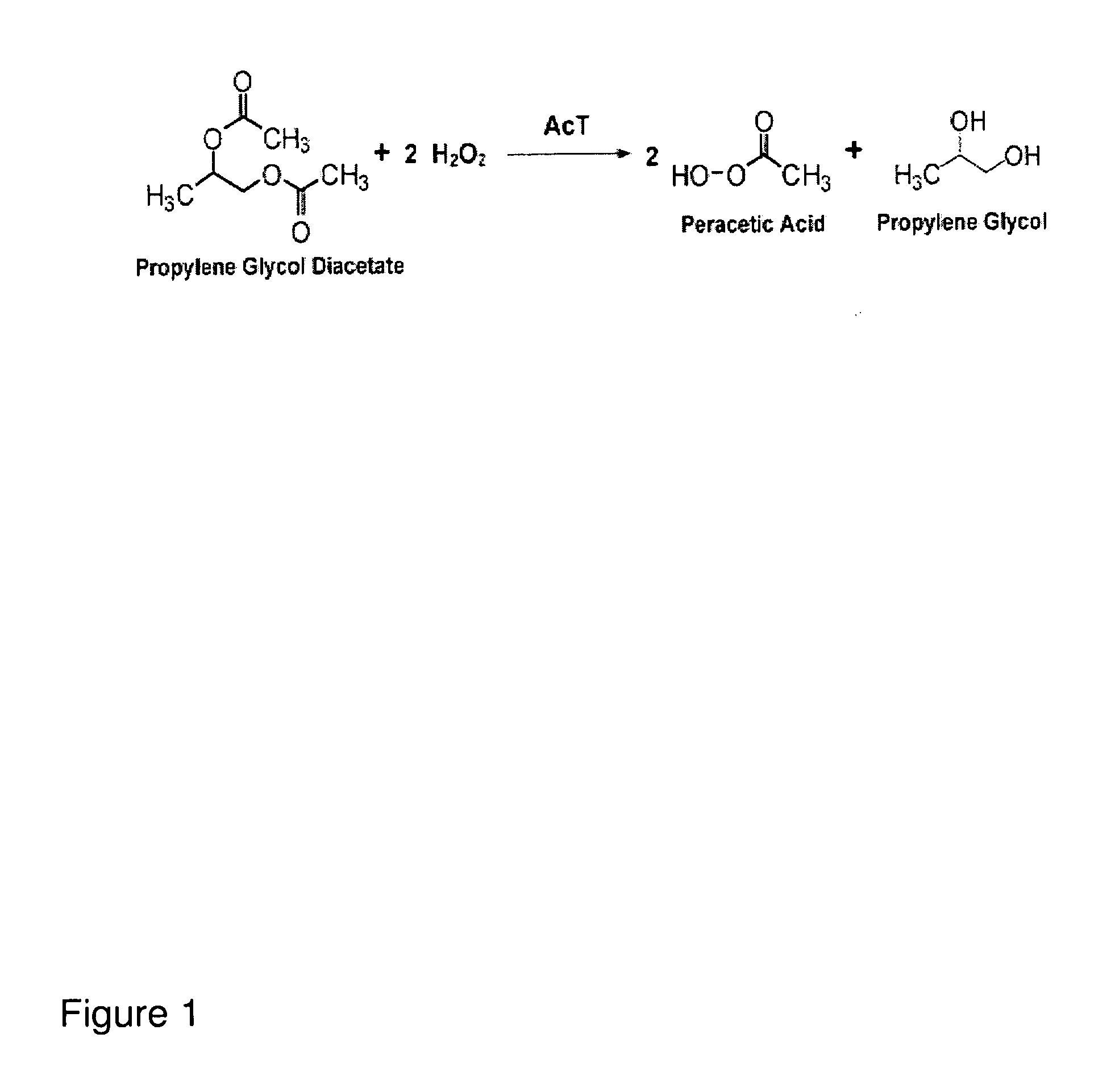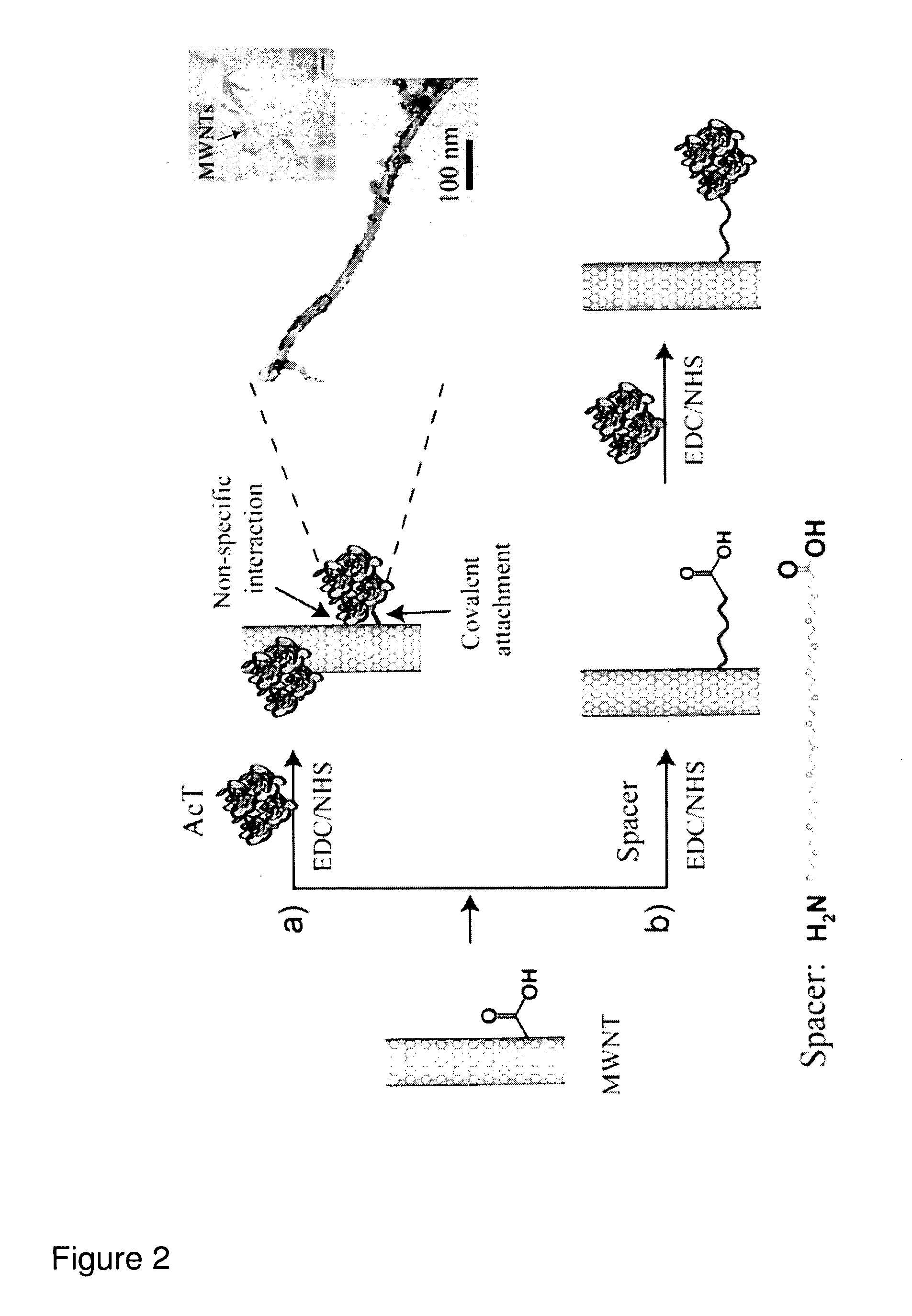Enzyme-based nanoscale decontaminating composites
a nano-scale decontamination and nano-enzyme technology, applied in detergent compounding agents, paints with biocides, on/in inorganic carriers, etc., can solve the problems of insufficient realization of the practicality of peracid producing enzymes as disinfectant reagents, corrosive sulfuric acid in the product is typically high, and the reaction is typically slow. , to achieve the effect of reducing the loss of enzyme activity, and reducing the loss of enzym
- Summary
- Abstract
- Description
- Claims
- Application Information
AI Technical Summary
Benefits of technology
Problems solved by technology
Method used
Image
Examples
examples
Introduction
[0101]Aspects of the examples involve covalent attachment of perhydrolases to carbon nanotubes and subsequent incorporation of the resulting conjugates into polymers (poly(methyl methacrylate) (PMMA) and poly(vinyl acetate) (PVAc)), and latex paint compositions. Carbon nanotubes were chosen as the nano-sized carriers (nanoparticles) for AcT because of their known ability to stabilize enzymes (20, 21). Moreover, structural and physical properties, such as high aspect ratios, low densities, and very high mechanical strength (22) make them excellent filling materials to reinforce polymers (23-25) and ceramics (26), in certain applications.
[0102]Significant effort has been made to address the generation of PAA from an aqueous environment through identification of perhydrolases with greater reactivity on H2O2 than on water as the acyl acceptor. In particular, a S54V variant of a perhydrolase (denoted as AcT) from Mycobacterium smegmatis is active on various acyl donor substra...
PUM
| Property | Measurement | Unit |
|---|---|---|
| Fraction | aaaaa | aaaaa |
| Fraction | aaaaa | aaaaa |
| Fraction | aaaaa | aaaaa |
Abstract
Description
Claims
Application Information
 Login to View More
Login to View More - R&D
- Intellectual Property
- Life Sciences
- Materials
- Tech Scout
- Unparalleled Data Quality
- Higher Quality Content
- 60% Fewer Hallucinations
Browse by: Latest US Patents, China's latest patents, Technical Efficacy Thesaurus, Application Domain, Technology Topic, Popular Technical Reports.
© 2025 PatSnap. All rights reserved.Legal|Privacy policy|Modern Slavery Act Transparency Statement|Sitemap|About US| Contact US: help@patsnap.com



